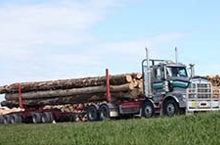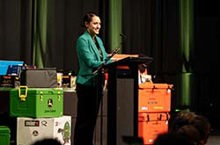
“This winter, students from Bucklands Beach Intermediate will join Rotary’s Trees for Survival programme founders to plant the first of a million native trees or shrubs by 2030,” says Trees for Survival Business Development Manager, Sally Clegg.
School children have already planted more than a million native trees and shrubs since the national environmental education and restoration programme, Trees for Survival Charitable Trust was founded in 1990. The programme has set a bold target to plant one million more trees and shrubs by 2030.
“With the right support, we believe we can greatly accelerate the programme and work with more schools and children - helping us get to another million by 2030!” she says.
That support includes donations from businesses and the public, and landowners who make their farms and lifestyle properties available for planting.
The Trees for Survival Charitable Trust was established by Pakuranga Rotary in response to Rotary International's theme of 'Preserve Planet Earth'. The aim was to work with schools and landowners to plant native seedlings on unstable and riparian land to increase biodiversity and offset carbon emissions.
The programme has flourished. Today, Trees for Survival is a standalone charity, involving 223 schools and over 7000 school children across New Zealand.
Entirely funded by donations, it works with schools, businesses and individuals to establish nurseries in schools which grow seedlings ready for planting. Come winter, Trees for Survival's network of regional facilitators arrange planting days on properties owned by farmers, lifestylers and community organisations. This includes providing thousands of native plant seedlings, which the students nurture and then plant along waterways to improve water quality, and on hillsides to help prevent erosion.
“It’s a wonderful programme because everyone wins,” she adds. “The schools have nurseries provided for teaching, and children and high schoolers can earn credits for the primary industry programme, the landowners have native trees and shrubs planted, and the environment enjoys native restoration.”
As one land owner says. “As kaitiaki (guardians) of the land, our family really value the partnership with Trees for Survival and the local schools that come and plant each year.
Planting days are something we all look forward to. There are so many positives about being involved; not only is the land being reinvigorated, but it is so inspiring to see the knowledge and skills the children are learning.”









